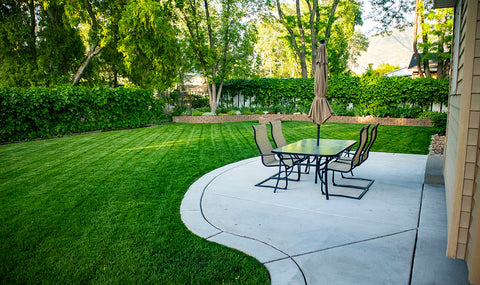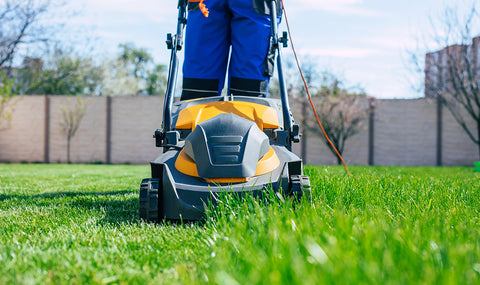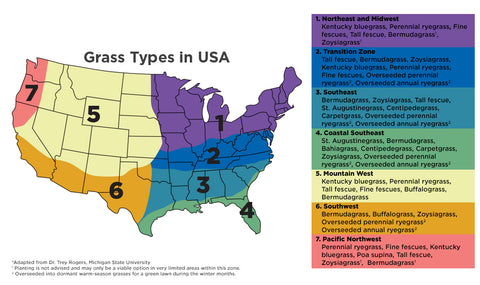A well-maintained lawn and landscape can significantly increase the value of your home by creating a positive first impression and enhancing its overall appearance. When your turf is properly groomed and your plants are thriving with vibrant colors and striking contrasts, they become visually appealing and eye-catching to others.
Automated systems, such as in-ground irrigation, contribute to increasing the value of a property. An in-ground irrigation system not only boosts the property's worth but also helps save on the costs associated with watering the lawn when used effectively. Additionally, landscape lighting adds significant value to the home by drawing attention to the entire property. Furthermore, items like patios, decks, fire pits, swimming pools, and outdoor kitchen areas are also considered integral parts of the property's landscape.

The Impact of Landscaping on the Value of a Home
Landscaping plays a significant role in shaping the impression a home makes. The front lawn is often the first thing a visitor notices, contributing to a positive initial impression. However, landscaping projects that appear geographically infeasible or high maintenance may deter potential buyers.
Engaging in regular maintenance of your lawn and landscaping can yield rewarding results. Activities such as mowing, pruning, implementing turfgrass cultural practices, and applying annual color contribute to a remarkable 104% return on investment. While a lush, green lawn is appealing in numerous locations, it becomes impractical in drought zones due to its high water requirement.
Maintain simplicity in your landscape to ensure that others can appreciate and understand the theme. It's advisable to avoid design ideas that might be overly personal or trendy. As a standard guideline, it's recommended to allocate your spending on outdoor and landscaping improvements within the range of 10-20% of your home’s current value. The most financially rewarding landscaping projects are those that expand living space and introduce low-maintenance beauty to a property.

Improving your Lawn and Landscape
Improving home landscapes, it's essential to start with a clear design theme in mind. Researching and selecting turf and landscape plants that are suitable for the specific region where the property is located is necessary. The first step in this process involves performing a comprehensive evaluation of both the lawn and landscape.
Selecting the Right Grass Type
The first important step is selecting a lawn grass adapted to the area or region's climate. It's important to choose turfgrass that can withstand both winter and summer conditions. While there may be a desire to plant a beautiful cool-season grass lawn, it's essential to ensure that the location can support the grass throughout the summer without requiring extensive maintenance. For instance, while Bermuda grass is known for its adaptability, it's not practical to install it in northern regions of the United States, just as it wouldn't be suitable to plant Kentucky Bluegrass in a deep southern lawn.
The success of one’s landscape depends on a turfgrass's ability to survive stress without practicing extreme measures. The more stress a home lawn grass endures, the less likely it is to thrive. Factors such as temperatures, high humidity, moisture levels, UV ray exposure, shade, and geographic location are all factors to consider when designing a landscape. It's essential to keep things practical and avoid pushing the limits of what a turfgrass can endure.

Lawn Striping and Adding Contrast to Your Yard
Creating fine lines of color contrast separates a deep and dark green lawn from landscape and hardscape features. A detailed and defined edge between turfgrass, shrubs, and trees displays a well-organized and thorough care of the overall home and landscape. Uniqueness in color contrast can be accomplished by installing colored mulch, lava rock, washed stone, or bleached white sand. Utilizing a crisp and defined mowing pattern with alternating color stripes further enhances the beautification and overall attractiveness of one's home.
The Importance of Lawn Maintenance
The primary goal of creating and maintaining one's lawn and landscape is practical maintenance and care. Turfgrass and landscape grooming must be practiced regularly. Nevertheless, it's important to consider the time and effort to create a curb-appealing landscape for the home residence. It's advisable to always estimate the landscaping cost before initiating installation and renovation.
Maintaining a well-established lawn poses significant challenges, yet is a very rewarding experience. The sense of accomplishment from nurturing a beautiful lawn and enjoying the final product boosts one’s confidence and motivates continuous improvement. Maintaining a lawn can offer therapeutic benefits and serve as a stress reliever, while investing time and effort in your lawn and landscape when selling a home brings both self-satisfaction and potential financial rewards.









